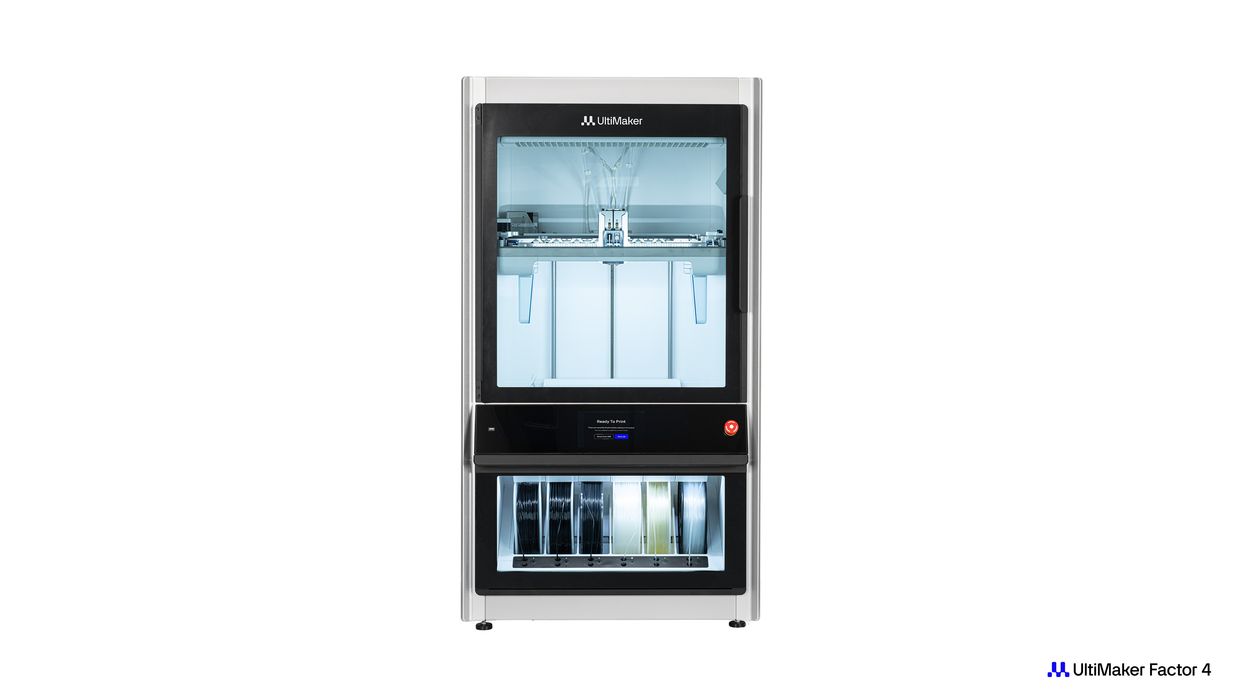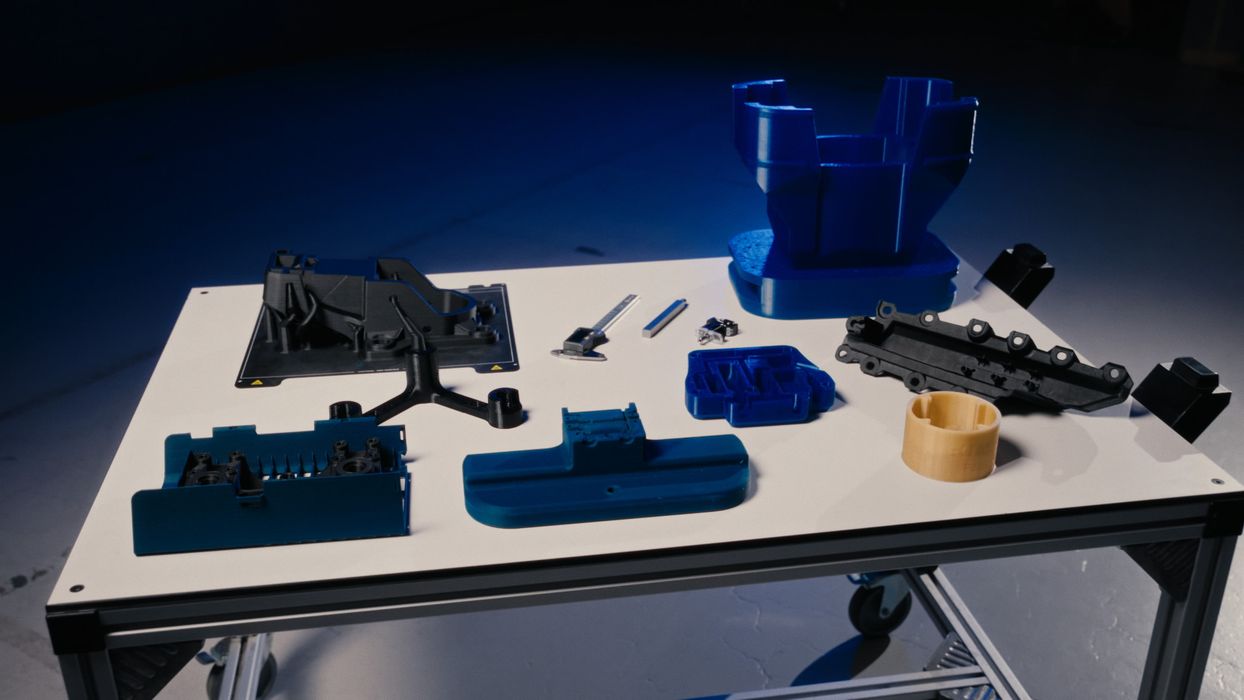
Industrial-grade 3D printer focuses on reliability, with automatic material handling and in-process monitoring.
The 3D printing industry has been struggling in recent years: the inevitable decline of a novel technology after an initial wave of inflated expectations (AI enthusiasts, take note). However, when market conditions make innovation all the more essential to success, the end results can be good news for engineers.
The latest example comes from UltiMaker with the release of the Factor 4 material extrusion 3D printer.
“There’s a perception that the reliability of 3D-printed parts is low and that causes uptime issues,” explains Michael Mignatti, vice president for printers and peripherals at UltiMaker. “Or that 3D printing doesn’t have the accuracy and precision engineers need.”
As Mignatti frames it, 3D printing has seen success with manufacturing aids involving static loads and lower temperature ranges where accuracy isn’t as critical. For UltiMaker, these applications are serviced by the S series and Method series, with the latter covering higher-grade manufacturing tools, small batches and spare parts.
“But we recognized that there’s still a big gap there,” Mignatti says, “There are R&D engineers, designers and manufacturers that have experience with additive manufacturing, they were satisfied with it, and now they’re looking for the next step in maturity.”
For UltiMaker, that’s where the Factor 4 comes in.
Inside the UltiMaker Factor 4
Like the Method series, the Factor 4 is designed for engineering applications, but with a more dedicated focus on industrial production. The build volume is 330 x 240 x 300 mm, with a heated bed and actively controlled airflow to manage build volume temperature up to 70° C. The print core can achieve printing temperatures up to 340°C, enabling engineers to 3D print parts using a broader range of materials.
One of the highlighted materials available on the Factor 4 is UltiMaker PPS CF, a semi-crystalline thermoplastic reinforced with carbon fiber. It has a temperature resistance greater than 240°C and it’s flame retardant.
‘Reliability’ is the watchword for the Factor 4, informing such new developments as an H-bridge gantry, riveted steel frame, closed-loop extrusion print head and an integrated material handling system. The latter can hold up to six spools of filaments inside a climate-controlled environment with automatic material change capability.
On the software side, the Factor 4’s announcement comes hot on the heels of the Cura 5.7 release earlier this month, and Cura 5.7.1 includes new print profiles for the Factor 4. The printer is also compatible with major CAD software. What this means is that even though the Factor 4 is a more advanced 3D printer, users comfortable with Cura and the rest of the UltiMaker ecosystem can expect no surprises.
However, there is one other software addition that UltiMaker has introduced which is worth commenting on: a new feature called Print Process Reporting.
“Essentially, what this does is use the sensors on the machine to build out a report about nozzle temperature, flow rates, build volume temperature and so on,” explains Mignatti. “If any of those goes outside a preset range during printing, the report will highlight what happened and where in the G-code it occurred. This enables the engineer to decide whether or not it’s a crucial area that means the part will need to be scrapped.”
Consistency and speed in 3D printing
Beyond troubleshooting and quality control, Print Process Reporting means that users can expect consistency between printers, whether they’re side-by-side or in different facilities on opposite sides of the planet.
UltiMaker reports that the Factor 4 achieved over 95% print completion success in internal testing, with test parts having dimensional accuracy within ±0.2 mm or ±0.2% of feature nominal length. These tests were conducted using UltiMaker PLA, Tough PLA, PETG, PET CF and PPS CF.
Moreover, the internal testing also showed a reported 50% increase in productivity compared to the UltiMaker S7 when printing with UltiMaker PET-CF and Nylon. This is despite speed not being a key target for the Factor 4.

Again, the primary goal was consistency: “We didn’t focus on print speed when we set out to design the Factor 4,” says Mignatti. “It’s something we pay attention to, but it’s important to achieve speed in the right way. We want to make sure it’s repeatable and reliable so you get the properties you’re expecting.”
Of course, between the UltiMaker S series and the new Factor 4 lies the UltiMaker Method series, which was also designed with engineers in mind. How should one decide between the two? Mignatti suggests that it comes down to materials.
“With the Method XL, we’re targeting that amorphous range between 70C and 110C in the build chamber,” he says. “That covers ABS and PCB materials with good quality and repeatability, but for PSE and those other higher-temperature materials, the Factor 4 is the better option.”
Factor 4 on the factory floor
UltiMaker’s Factor 4 is most definitely not an entry-level 3D printer. True, the machines are equipped with HEPA filters to allow them to run safely in office environments, and they’re quiet enough to be unobtrusive on a Zoom call (something I experienced first-hand), but you’re most likely to find them in industrial settings.
Read the rest of this story at ENGINEERING.com
